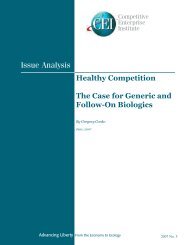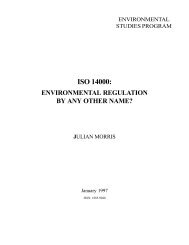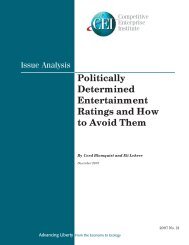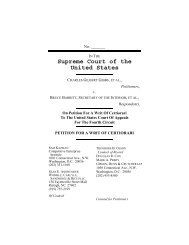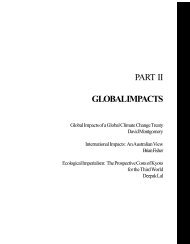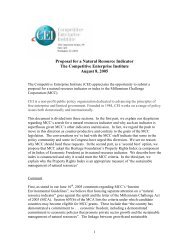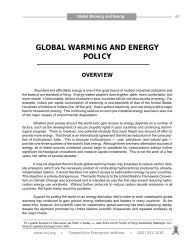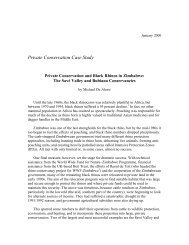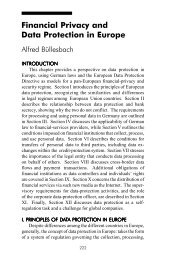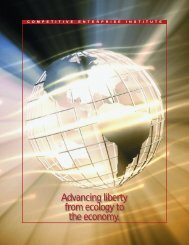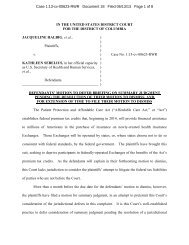The Strategic Approach to International Chemicals Management
The Strategic Approach to International Chemicals Management
The Strategic Approach to International Chemicals Management
You also want an ePaper? Increase the reach of your titles
YUMPU automatically turns print PDFs into web optimized ePapers that Google loves.
<strong>The</strong> <strong>Strategic</strong> <strong>Approach</strong> <strong>to</strong> <strong>International</strong><br />
<strong>Chemicals</strong> <strong>Management</strong><br />
<strong>The</strong> <strong>Strategic</strong> <strong>Approach</strong> <strong>to</strong> <strong>International</strong><br />
<strong>Chemicals</strong> <strong>Management</strong> (SAICM) is a United<br />
Nations (UN) initiative designed <strong>to</strong> set up a<br />
global chemicals agency <strong>to</strong> coordinate management<br />
of chemicals, wastes, and other substances<br />
on a global scale. <strong>The</strong> program is dubbed as<br />
a voluntary initiative through which “stakeholders”<br />
will engage in efforts <strong>to</strong> ensure safe<br />
management of chemicals. Such efforts include<br />
information sharing, harmonization of chemical<br />
risk standards and labeling, and training. In addition,<br />
SAICM is supposed <strong>to</strong> ensure ratification<br />
and implementation of environmental treaties,<br />
but how those goals will be pursued is unclear.<br />
Proponents argue that centralization of chemical<br />
policy is important because of the number<br />
of chemicals in world commerce <strong>to</strong>day—some<br />
estimates range up <strong>to</strong> 100,000—and because<br />
Angela Logomasini<br />
of estimates that place chemical production<br />
as increasing by 80 percent within the next 15<br />
years. 1<br />
His<strong>to</strong>ry and Background of SAICM<br />
SAICM began as an item discussed in chapter<br />
19 of Agenda 21, 2 an action plan agreed<br />
<strong>to</strong> at the UN Conference on Environment and<br />
1. “Ministers Reach Global Agreement on Sound <strong>Management</strong><br />
of <strong>Chemicals</strong>,” European Report, February 11,<br />
2006.<br />
2. United Nations Department of Economic and Social<br />
Affairs, “Environmentally Sound <strong>Management</strong> of<br />
Toxic <strong>Chemicals</strong>, Including Prevention of Illegal <strong>International</strong><br />
Traffic in Toxic and Dangerous Products,” in<br />
United Nations Conference on Environment and Development,<br />
Agenda 21: Earth’s Action Plan, UN Doc.<br />
A/CONF.151/26, chapter 19 (New York: United Nations,<br />
202-331-1010 • www.cei.org • Competitive Enterprise Institute
Development, held in Rio de Janeiro, Brazil,<br />
in 1992. <strong>The</strong> conference also released the Rio<br />
Declaration, which outlined environmental<br />
goals. <strong>The</strong> Agenda 21 action plan proposed a<br />
system for global chemicals management. Since<br />
then there have been three international meetings<br />
on SAICM, and during the last meeting,<br />
held in February 2006, several documents were<br />
finalized that form the SAICM program: the<br />
high-level policy declaration called the “Dubai<br />
Declaration,” the “Global Action Plan,” and<br />
the “Overarching Policy Strategy.” 3 Also during<br />
the 2006 meeting, the parties <strong>to</strong> the agreement<br />
established the <strong>Chemicals</strong> Secretariat in the UN<br />
<strong>to</strong> administer the program.<br />
SAICM and the Precautionary Principle<br />
During the SAICM international meetings,<br />
the United States opposed language that set<br />
the “precautionary principle” as an object of<br />
the program—an approach that demands that<br />
products be proven safe before entering the marketplace.<br />
Domestically, U.S. regula<strong>to</strong>rs follow a<br />
more risk-based approach, assessing the risks of<br />
products and setting regulations that allow an<br />
“acceptable” level of risk. Under the present U.S.<br />
system, regula<strong>to</strong>rs must demonstrate that products<br />
are unsafe before removing them from the<br />
market. Although this approach often produces<br />
very restrictive regulations—including bans of<br />
many products—it provides some protection<br />
against arbitrary governmental coercion.<br />
In contrast, the precautionary principle reduces<br />
regula<strong>to</strong>ry accountability by shifting the<br />
burden of proof. It demands that manufactur-<br />
2005) http://www.un.org/esa/sustdev/documents/agenda21/<br />
english/agenda21chapter19.htm.<br />
3. <strong>The</strong>se documents can be found online at http://www.<br />
chem.unep.ch/saicm.<br />
<strong>The</strong> Environmental Source<br />
ers prove that their products are safe before<br />
allowing them <strong>to</strong> enter in<strong>to</strong>, or continue in,<br />
commerce. Because nothing in life is 100 percent<br />
safe, the precautionary principle means<br />
that governments can regulate products simply<br />
because they decide that products might pose<br />
public health risks—making regulation arbitrary<br />
and subject <strong>to</strong> political whims. During<br />
SAICM negotiations, policymakers removed<br />
language on the precautionary principle from<br />
the document, which now states that the program<br />
will “take in<strong>to</strong> account” the wording of<br />
the Rio Declaration. Although this language<br />
creates some confusion as <strong>to</strong> whether the program<br />
will follow the precautionary principle,<br />
there is reason <strong>to</strong> believe that it eventually will<br />
take a precautionary approach, because the Rio<br />
Declaration endorses the principle.<br />
Policy Implications<br />
SAICM represents a policy whose scope is as<br />
extensive as that of the Kyo<strong>to</strong> Pro<strong>to</strong>col on climate<br />
change, 4 which seeks <strong>to</strong> control use of the<br />
world’s energy. SAICM covers the other half of the<br />
universe. Whereas the Kyo<strong>to</strong> Pro<strong>to</strong>col attempts<br />
<strong>to</strong> regulate the world’s energy, SAICM seeks <strong>to</strong><br />
manage matter—all nonliving physical objects<br />
on Earth. SAICM is seen as innocuous because<br />
it is considered a voluntary effort. Yet despite its<br />
nonbinding nature, SAICM is likely <strong>to</strong> possess a<br />
substantial policy role—setting global standards<br />
that will likely become models for governments<br />
<strong>to</strong> follow as the basis for environmental treaties<br />
and other international agreements that, unlike<br />
SAICM, will be binding.<br />
4. <strong>The</strong> Kyo<strong>to</strong> Pro<strong>to</strong>col <strong>to</strong> the United Nations Framework<br />
Convention on Climate Change was adopted on<br />
December 11, 1997. <strong>The</strong> text of the pro<strong>to</strong>col can be<br />
found at http://unfccc.int/essential_background/kyo<strong>to</strong>_<br />
pro<strong>to</strong>col/items/2830.php.<br />
Competitive Enterprise Institute • www.cei.org • 202-331-1010
In fact, one of SAICM’s key goals is <strong>to</strong> ensure<br />
that all existing treaties related <strong>to</strong> chemical<br />
and waste disposal are ratified and become<br />
subject <strong>to</strong> implementing legislation in the various<br />
nations. <strong>The</strong> United States, a likely target<br />
of ratification and implementation efforts, has<br />
yet <strong>to</strong> ratify a number of treaties, including the<br />
S<strong>to</strong>ckholm Convention on Persistent Organic<br />
Pollutants, 5 which bans a number of chemical<br />
internationally, and the Basel Convention on<br />
the Control of Transboundary Movements of<br />
Hazardous Wastes and <strong>The</strong>ir Disposal, 6 which<br />
regulates shipment of hazardous wastes.<br />
SAICM’s “Global Action Plan” offers an<br />
idea as <strong>to</strong> the program’s ambitious agenda for<br />
chemicals. It includes nearly 300 “concrete<br />
measures” for the various stakeholders <strong>to</strong> pursue.<br />
Many of these measures are restrictive in<br />
nature, including, for example intentions <strong>to</strong><br />
“restrict availability of” or “substitute” “highly<br />
<strong>to</strong>xic pesticides”; “promote substitution of hazardous<br />
chemicals”; “regulate the availability,<br />
distribution, and use of pesticides”; “halt the<br />
sale of and recall products” that pose “unacceptable<br />
risks”; and “eliminate the use” of certain<br />
“hazardous chemicals.” 7<br />
SAICM and REACH<br />
Another reason <strong>to</strong> believe that SAICM will<br />
have a substantial regula<strong>to</strong>ry role is that many<br />
5. S<strong>to</strong>ckholm Convention on Persistent Organic Pollutants,<br />
May 23, 2001, 40 I.L.M. 532, http://www.pops.int/<br />
documents/convtext/convtext_en.pdf.<br />
6. Basel Convention on the Control of Transboundary<br />
Movements of Hazardous Wastes and <strong>The</strong>ir Disposal,<br />
March 22, 1989, 28 I.L.M. 649, http://www.basel.int/<br />
text/con-e-rev.pdf.<br />
7. Draft Global Plan of Action, SAICM, July 21, 2005,<br />
http://www.chem.unep.ch/saicm/meeting/prepcom3/<br />
en/3-4%20GPA.pdf.<br />
<strong>International</strong> Policy<br />
proponents see it as the perfect vehicle for the<br />
European Union <strong>to</strong> globalize its REACH program,<br />
which became law in December 2006.<br />
REACH—which stands for Registration,<br />
Evaluation, and Authorization of <strong>Chemicals</strong>—<br />
applies a precautionary approach <strong>to</strong> chemical<br />
regulation that will be followed by government<br />
regulation, demanding that firms demonstrate<br />
safety through a complicated registration and<br />
information collection program that will inevitably<br />
result in the ban of some products.<br />
SAICM and Public Health<br />
Although it is true that some of SAICM’s<br />
goals are reasonable, such as ensuring that<br />
developing nations gain information regarding<br />
the proper handling of chemicals, the program<br />
is likely <strong>to</strong> fail when it comes <strong>to</strong> attaining<br />
these goals. It will fail for the same reasons<br />
that centralized economic planning has failed:<br />
government officials are <strong>to</strong>o removed from the<br />
many diverse problems that individuals face in<br />
a society and lack the information necessary<br />
<strong>to</strong> solve those problems. Uniform policies will<br />
not work in the various situations around the<br />
world; such political processes tend <strong>to</strong> serve<br />
organized players rather than the common<br />
good, and policy goals are often based on misperceptions.<br />
Market economies are better situated <strong>to</strong><br />
address problems associated with chemicals<br />
management and some of the larger problems<br />
that hinder human well-being in developing<br />
nations. Indeed, many of the serious problems<br />
that SAICM proposes <strong>to</strong> address—such<br />
as developing nations’ mismanagement of<br />
dangerous substances because of their lack of<br />
resources <strong>to</strong> pursue policies for proper handling—could<br />
be solved through the promotion<br />
of economic growth, not through expensive<br />
202-331-1010 • www.cei.org • Competitive Enterprise Institute
global governance. <strong>The</strong> costs of SAICM will<br />
likely have the opposite result: SAICM will<br />
divert resources from more important issues<br />
and undermine commerce and economic development.<br />
In fact, most of the world’s serious environmental<br />
problems are the effects of poverty in<br />
developing nations. According <strong>to</strong> a 2001 World<br />
Bank study, Environment Strategy Papers:<br />
Health and Environment, 8 the most prevalent<br />
global environmental problem is inadequate<br />
sanitation, an issue that only economic growth<br />
can address through improved infrastructure<br />
and increased access <strong>to</strong> chemical disinfectants,<br />
such as chlorine. Next on the list of problems is<br />
limited access <strong>to</strong> modern energy sources, including<br />
electricity and fossil fuels. <strong>The</strong> lack of such<br />
amenities means that the rural poor around the<br />
world rely on burning biomass fuels—such as<br />
cow dung—in their homes as an energy source.<br />
Resulting pollution leads <strong>to</strong> an estimated 1.7<br />
million deaths associated with respira<strong>to</strong>ry illnesses<br />
each year. 9<br />
Meanwhile, UN bureaucrats fret that someone<br />
might consume trace levels of chemicals<br />
found in plastic packaging. Yet increased use<br />
of such packaging would actually benefit the<br />
world’s poor—rather than increase risks. That<br />
is because the absence of such sanitary packaging<br />
and refrigeration in developing nations<br />
contributes <strong>to</strong> food spoilage (and shortages)<br />
and the spread of infectious agents, which kill<br />
tens of thousands of people every year.<br />
SAICM is not the solution <strong>to</strong> such problems<br />
and arguably represents a serious misallocation<br />
of limited resources. Indeed, developing<br />
8. Kseniya Lvovsky, Environment Strategy Papers:<br />
Health and Environment (Washing<strong>to</strong>n, DC: World Bank,<br />
2001).<br />
9. Ibid.<br />
<strong>The</strong> Environmental Source<br />
nations cannot afford the regula<strong>to</strong>ry burdens<br />
proposed by many of the world’s environmental<br />
treaties, and many of these treaties promise<br />
<strong>to</strong> undermine economic growth. For example,<br />
a study by Liberty Institute in India shows that<br />
the Basel Convention has proved counterproductive<br />
and detrimental <strong>to</strong> development in<br />
poor nations. 10<br />
SAICM is also unlikely <strong>to</strong> improve public<br />
health in developed nations by reducing cancer<br />
rates as its proponents believe it will do. <strong>The</strong><br />
section on chemical risk in <strong>The</strong> Environmental<br />
Source details why policies like SAICM are<br />
likely <strong>to</strong> have few public health benefits.<br />
Conclusion<br />
SAICM represents a major international<br />
policy development, and businesses may soon<br />
be caught by surprise after the SAICM Secretariat<br />
begins <strong>to</strong> affect policy around the world.<br />
And even though SAICM is primarily intended<br />
<strong>to</strong> assist developing nations with the management<br />
of chemicals, developing nations stand <strong>to</strong><br />
lose the most from the program, which seeks <strong>to</strong><br />
impose burdensome regulations.<br />
Key Contact<br />
Angela Logomasini, Direc<strong>to</strong>r of Risk and<br />
Environmental Policy, Competitive Enterprise<br />
Institute, alogomasini@cei.org.<br />
10. Prasanna Srinivasan, “<strong>The</strong> Basel Convention 1989:<br />
A Developing Nation’s Perspective,” Liberty Institute,<br />
Delhi, September 24, 2001, http://www.libertyindia.org/<br />
pdfs/basel_convention_srinivasan.pdf.<br />
Competitive Enterprise Institute • www.cei.org • 202-331-1010
Recommended Readings<br />
Logomasini, Angela. Earth Sense in the Balance.<br />
National Review Online, September<br />
23, 2005, http://www.cei.org/gencon/<br />
029,04853.cfm.<br />
<strong>International</strong> Policy<br />
Logomasini, Angela. <strong>The</strong> U.N.’s <strong>Strategic</strong> <strong>Approach</strong><br />
<strong>to</strong> <strong>International</strong> <strong>Chemicals</strong> <strong>Management</strong><br />
Program Stealth Attempt at Global<br />
Regulation. Washing<strong>to</strong>n, D.C.: Competitive<br />
Enteprisxe Institute: March 29, 2006, http://<br />
www.cei.org/utils/printer.cfm?AID=5233.<br />
202-331-1010 • www.cei.org • Competitive Enterprise Institute<br />
Updated 2008.




